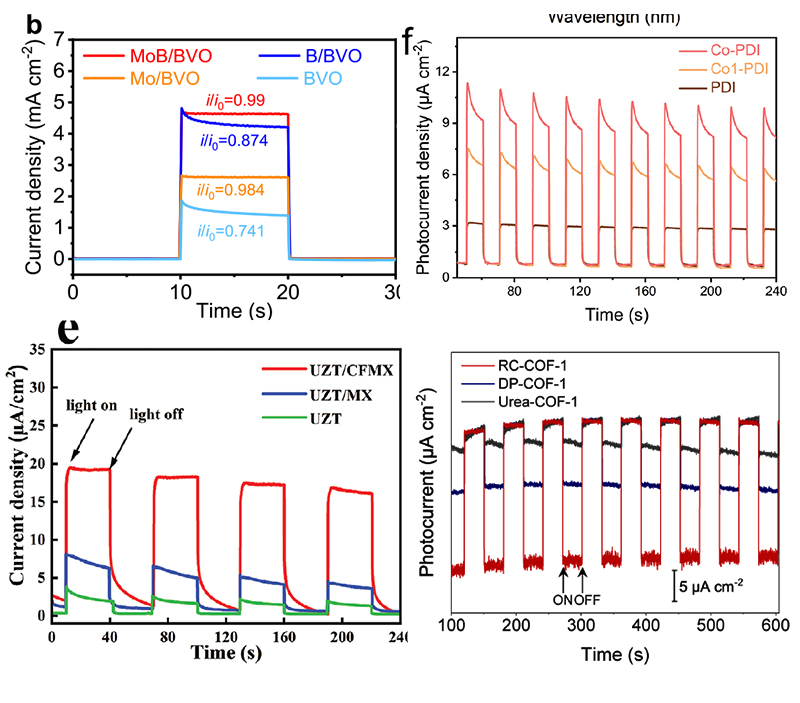Original content is not easy, if you want to reprint this article, please contact the staff and indicate the source in the reprinted article, otherwise infringement will be processed!
1. Photocurrent Density Jp
Photocurrent density is often used as a performance evaluation parameter in photoelectrochemical experiments.
Photocurrent density refers to the ratio of the photocurrent generated by the photoelectrode under solar irradiation to the irradiated surface area.
It is usually determined by the light absorption rate, the efficiency of electron-hole pair separation in the bulk phase, and the charge injection efficiency at the surface, and it varies with applied bias.
Photocurrent density can be expressed using formula (1)[1]:

 : Measured photocurrent density;
: Measured photocurrent density;
 : Maximum theoretical photocurrent density for semiconductor photoelectrode;
: Maximum theoretical photocurrent density for semiconductor photoelectrode;
 : Light absorption efficiency of semiconductor photoelectrode;
: Light absorption efficiency of semiconductor photoelectrode;
 : Charge separation efficiency of semiconductor photoelectrode;
: Charge separation efficiency of semiconductor photoelectrode;
 : Surface charge injection efficiency of semiconductor photoelectrode.
: Surface charge injection efficiency of semiconductor photoelectrode.
Additionally, the formula for photocurrent conversion efficiency (η) is as follows:

P0: Incident light intensity on the surface of the photoelectrode
From formula (2), it can be seen that photocurrent conversion efficiency (η) is directly proportional to photocurrent density (Jp), and Jp depends on both light absorption and utilization by the photoelectrode and the separation efficiency of photo-generated charge carriers at internal and interfacial regions, both of which are critical factors for photoelectrochemical performance.
2. Photocurrent Density Measurement
In photoelectrochemical experiments, photocurrent generated by the photoelectrode with changing voltage is often recorded using linear sweep voltammetry (LSV) by means of an electrochemical workstation.
To confirm whether the photocurrent is due to the photoresponse, LSV curves are typically recorded under on/off light conditions. However, due to limitations in the light source's emission principles, frequent on/off switching cannot be achieved. To simulate this effect, a shutter device is added between the xenon lamp light source and the photoelectrode.

Figure 1. PLS-FX300HU High Uniformity Xenon Lamp Source, PFS40A Shutter

Figure 2. Transient photocurrent density curves [2-5]
As shown in Figure 2, when there is no light, the current density of the photoelectrode is almost zero. When light is introduced, the current increases instantly, indicating that the increased current is due to the introduction of light. However, there is a sharp peak when the current increases, which may be caused by poor conductivity, resulting in rapid recombination of photo-generated charge carriers.
Transient photocurrent can be used to assess the separation of photo-generated electrons and holes in the photoelectrode. A higher photocurrent indicates better separation efficiency.